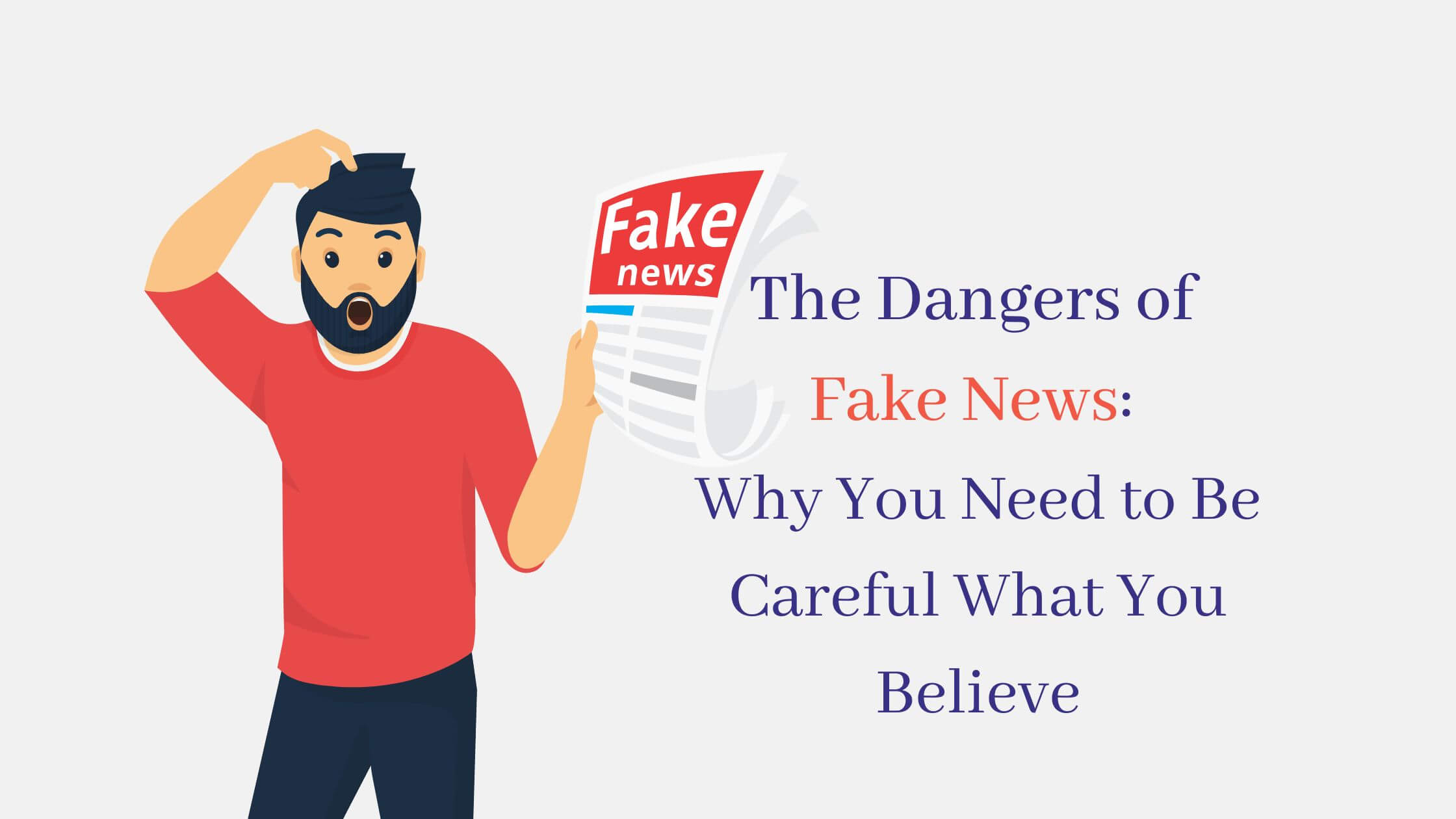Introduction
As a generation, we rely heavily on the internet for information. With a few clicks, we can instantly access breaking news from all over the world. However, not all news is created equal, and not all online information can be trusted. In ways we might not even be aware of, fake news is on the rise and has a significant impact on society. This blog will discuss the dangers of false information and the need to be cautious when forming opinions.
The Impact of Fake News on Society Fake news has significantly impacted society in recent years. One of the most notable effects is our political system. Elections have been influenced by false news reports that were used to influence public opinion. Additionally, social polarization and conflict have increased as a result of the rise of fake news. Disinformation spreads because people frequently share false news reports without checking their authenticity.
Fake news has an effect on our health. False information regarding the COVID-19 virus and its therapies quickly circulated on social media throughout the pandemic. Due to this incorrect information, individuals took risky drugs and skipped out on vital medical care. The spreading of false information may have a serious negative impact on people’s health and wellbeing.
The Psychology Behind Fake News
Complex psychology behind fake news. Information that supports pre-existing views and biases increases the likelihood that a person would believe it. The term “confirmation bias” refers to these phenomena. Even if they are erroneous, false news reports that support a person’s opinions are more likely to be spread and accepted. Furthermore, emotionally charged false news stories—like those about crime or injustice—are more likely to be spread and taken seriously
Examples of Fake News Stories
Fake news stories come in many forms, from political propaganda to conspiracy theories. One well-known example of fake news that went viral on social media claimed that Indian cricketer Virat Kohli had announced his retirement from all forms of cricket. After India lost to England by 10 wickets in the T20 World Cup 2022’s semi-finals, a video started making the rounds on social media claiming that Indian cricketer Virat Kohli has announced retirement. The theory was entirely false because Kohli didn’t make any such announcement.
Another example of fake news is that in 2021, a false claim was circulated on social media that the government was planning to implement a lockdown across the country due to rising COVID-19 cases. The claim caused panic among the public but was later debunked by the government. Real-world consequences can result from the spread of false information, so being able to spot fake news is crucial.
How to Identify Fake News
Knowing how to recognize fake news in today’s society is essential. To determine whether a news article is accurate or not, you can use a variety of techniques. Check the authenticity of the story first. There are many fact-checking websites, including Boomlive.in and Dfrac.org. These websites allow you to check the validity of stories.
Secondly, look at the story’s citation. A blog, a private website, or a reliable news source? Reputable news sources are more likely to provide fact-checking and accurate information. Third, be wary of headlines that are clickbait. The purpose of clickbait headlines is to get readers to click on them,even though they frequently have little to do with the actual story.
The Dangers of Spreading Fake News
The consequences of conveying false information can be severe. People may end up making risky decisions as a result of it if they base their choices on false information. Furthermore, spreading false information can increase polarization and division among people. Before telling a story to someone else, it should be fact-checked.
The Role of Social Media in Spreading Fake News
Social media has significantly aided in the spread of false information. False information can spread quickly on social media platforms, and it can be challenging to identify the story’s original source. Social media algorithms also aid in the spread of false information. False information may be widely shared and viewed when algorithms are used to present users with content, they are more likely to interact with.
The Responsibility of Media Outlets in Combating Fake News
Media outlets have a responsibility to stop false information. Reputable news sources are more likely to provide fact-checking and accurate information. Media organizations can educate the public about the risks of spreading false information and how to spot it.
The Importance of Fact-Checking
A crucial skill in today’s world is fact-checking. Due to the prevalence of false information on the internet, it is essential to verify the authenticity of a story before sharing it with others. Factchecking websites like Boomlive.in and Dfrac.org allow users to check the validity of stories.
Conclusion
To sum up, fake news is a significant issue that has an impact on society that we might not even be
aware of. Being cautious when forming opinions and making sure that information is accurate before
sharing it with others is extremely important. We all have a responsibility to educate ourselves about
how to recognize false information, and social media sites and media outlets have a responsibility to
stand up for fake news. Let’s all work together to combat false information and promote reliable
sources.

